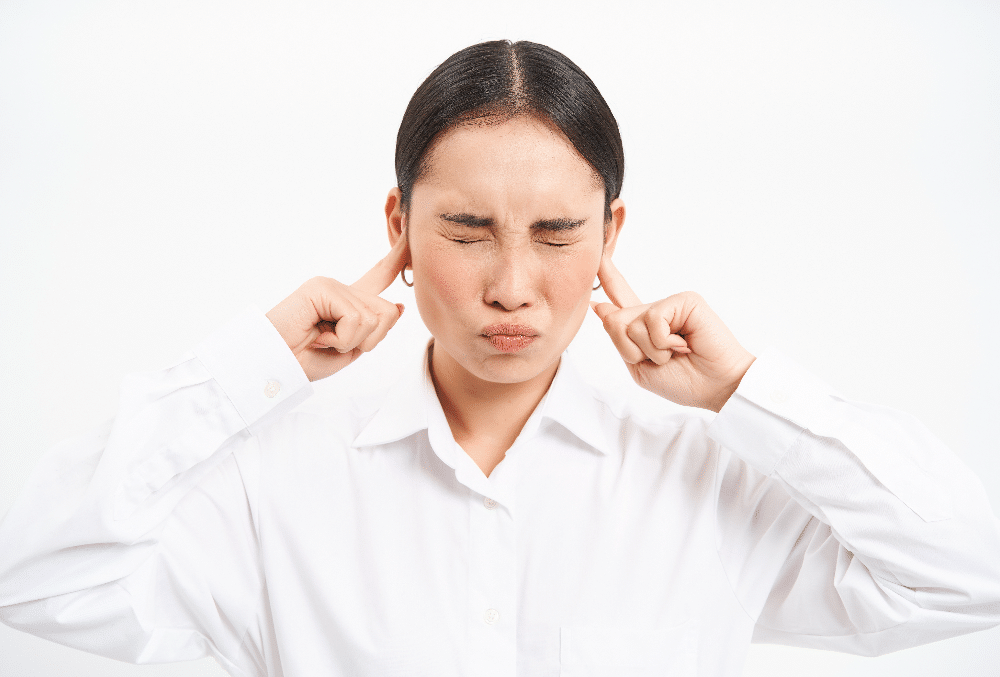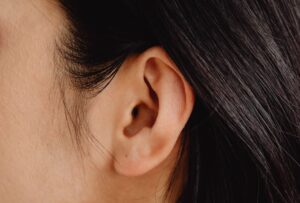Ear infections can strike at any age, bringing discomfort and disruption to your daily life. From the sharp, persistent pain to the muffled sounds and feelings of fullness, an infected ear can significantly impact your ability to hear and communicate effectively. Understanding the various causes, recognizing the telltale ear infection symptoms, and knowing when to seek professional care are crucial for prompt relief and preventing potential complications.
Ear Pain Causes
Ear pain, or Otalgia, while a common symptom associated with an ear infection, can arise from a variety of factors. Often, the discomfort can originate within the delicate structures of the middle ear, where inflammation or fluid buildup can trigger pain. However, it’s important to consider a broader range of possibilities. Here are some common causes of ear pain:
- Clogged Eustachian Tubes: The Eustachian tubes, small passageways connecting the middle ear to the back of the throat, play a crucial role in equalizing pressure and draining fluids. However, these tubes can become clogged due to allergies, colds, excess mucus, or infected adenoids (lymph tissue in the upper part of the throat). This blockage disrupts the normal flow of air and fluids, leading to pressure buildup and pain.
- Exposure to Cold Climate: Exposure to cold temperatures can sometimes contribute to ear pain. Cold air can irritate the sensitive skin of the ear canal. This irritation can exacerbate existing ear conditions or make the ear more susceptible to an infection of the ear canal.
- Recent Ear Infection: A recent ear infection, even after treatment, can sometimes leave lingering discomfort or increase susceptibility to another infection. The tissues may still be healing, or the infection might not have been fully eradicated, making the ear more vulnerable to a recurrence.
- Recent Illness: Systemic illnesses, such as colds or the flu, can lead to widespread inflammation and congestion that affects the Eustachian tubes, which are crucial for pressure equalization and drainage. When they become congested, it can disrupt normal ear function and predispose individuals to ear pain and potential ear infections.
- Birth Defect: In rare cases, structural abnormalities or birth defects of the ear or Eustachian tubes can contribute to recurrent ear problems and pain. These abnormalities can affect the anatomy of the ear, making it more difficult for fluids to drain properly or increasing the risk of infection.
Types of Ear Infections
Ear infections can take different forms depending on the part of the ear affected and the underlying cause. Understanding the various types helps in recognizing the symptoms and seeking appropriate treatment. Here are the main types of ear infections:
- Otitis Media: This is a middle ear infection, occurring when the area behind the eardrum becomes inflamed and filled with fluid. It’s often caused by bacteria or viruses and is common in children.
- Otitis Externa: Commonly known as “swimmer’s ear,” this is an infection of the outer ear canal, the passage that leads from the outside of the head to the eardrum. It’s often caused by bacteria or fungi and can be triggered by moisture, injury, or irritation.
- Fungal Ear Infection: This type of infection is caused by fungi, rather than bacteria or viruses. It can cause itching, pain, and discharge from the ear and may be more common in individuals with diabetes or weakened immune systems.
Ear Infection Symptoms
Ear infection symptoms can vary depending on the type and severity of the infection, and they may differ slightly between children and adults. However, some common signs to watch out for include:
- Ear pain (ranging from mild to severe)
- A feeling of fullness in the ear
- Muffled hearing
- Drainage from the ear (which may be clear, yellow, or bloody; odorless or with foul smell)
- Fever
- Headache
- Dizziness
- Loss of appetite
- Irritability (especially in children)
- Trouble sleeping
- Bleeding
Acute ear infections often involve fluid buildup behind the eardrum. In such cases, an electronic ear monitor may help visualize the eardrum. Yellow or green fluid may indicate a ruptured eardrum, necessitating prompt medical attention.
Complications
While most ear infections resolve without long-term consequences, complications can arise if they’re left untreated or become recurrent. It’s important to be aware of these potential risks:
- Impaired Hearing: Chronic or recurrent ear infections can damage the delicate structures of the middle ear, leading to temporary or permanent impaired hearing. The inflammation and fluid buildup can interfere with sound transmission. If you’re concerned about potential hearing loss following an ear infection, it’s advisable to visit a hearing health center to get a hearing test in the Philippines and assess your auditory health.
- Speech or Developmental Delay: In children, prolonged or untreated ear infections can interfere with speech development. The inability to hear clearly can hinder language acquisition and speech articulation.
- Spread of Infection: In rare cases, an ear infection can spread to surrounding tissues, such as the mastoid bone (mastoiditis) or even the brain (meningitis). These are serious complications requiring immediate medical intervention.
- Tearing of Eardrum: The pressure buildup from an ear infection can sometimes cause the eardrum to rupture or tear. While eardrums often heal on their own, prompt medical attention can help prevent further complications.
Treatment

The appropriate ear infection treatment depends on the underlying cause and the severity of the infection. Some mild infections, particularly those caused by viruses, may resolve on their own with time as your body’s immune system fights off the infection. To manage its symptoms, you can employ home treatments, which can include:
- Over-the-counter painkillers, such as ibuprofen or acetaminophen, can help manage pain and reduce fever.
- Gentamicin ear drops can help to treat bacterial infections of the outer ear canal. It’s important to note that gentamicin is an antibiotic, so it’s only effective against bacterial infections. It won’t work for viral or fungal infections. Always use ear drops as prescribed by a doctor or healthcare professional.
- Removing any discharge from the ear gently.
However, it’s crucial to consult a healthcare provider for an accurate diagnosis and a personalized treatment plan. A medical professional can properly assess your specific situation and recommend the most effective course of action.
When to See a Doctor
While some mild ear aches might improve with home care, certain signs and symptoms warrant a visit to a doctor. Prompt medical attention can help prevent complications and ensure effective ear infection treatment.
Seek medical advice if you experience any of the following:
- Severe ear pain
- Persistent ear pain that doesn’t improve after a few days
- Drainage from the ear, especially if it’s bloody or foul-smelling
- Dizziness or balance problems
- Hearing loss
- High fever
- Swelling or redness around the ear
Possible Prevention
While it’s impossible to completely eliminate the risk of ear infections, several preventive measures can help reduce your chances:
- Wash your hands frequently to prevent the spread of germs.
- Avoid smoking and exposure to secondhand smoke.
- Manage allergies effectively.
- Breastfeed infants (if possible).
- Stay up-to-date on vaccinations.
- If using hearing aids, clean them before and after use.
Protecting Your Hearing: Preventing Ear Infections
Protecting your hearing involves not only avoiding loud noises but also taking steps to prevent ear infections. By being mindful of the potential causes, recognizing the symptoms, and seeking timely medical attention, you can safeguard your auditory health and enjoy a lifetime of clear and comfortable hearing.








